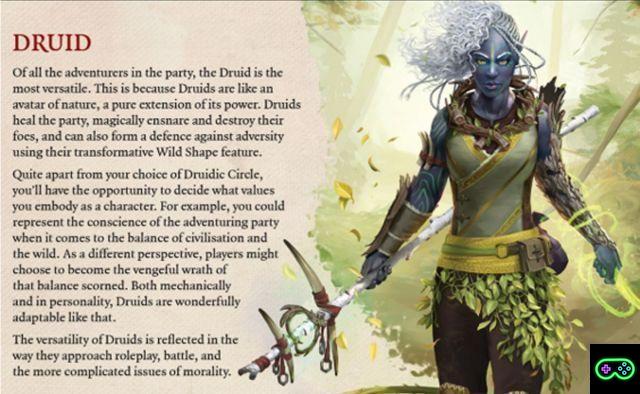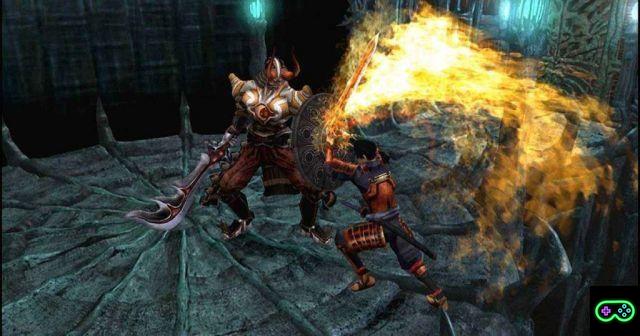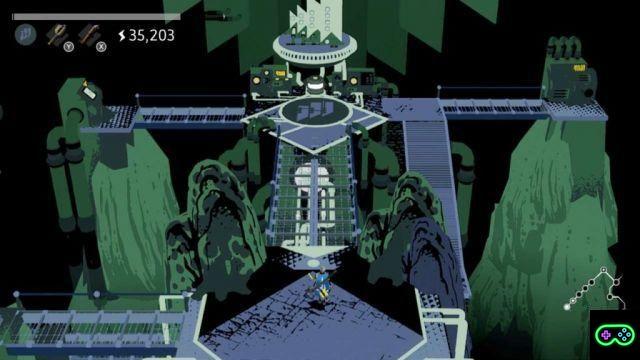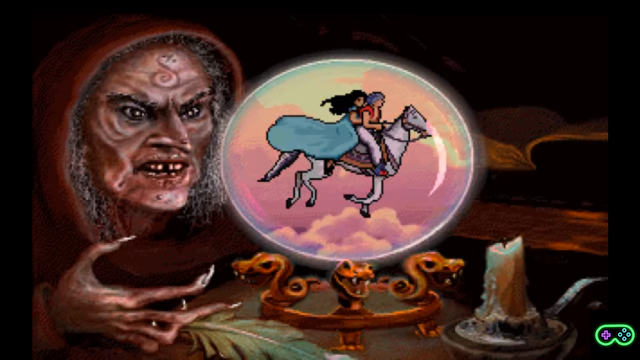Have you ever come across a masterpiece in a completely random way?
Have you ever bought a video game just because you didn't know how to spend those three or four euros of residual credit in your wallet?
And finally, has it ever happened to you that that very game radically changed your opinion on its genre?
Gentlemen, I have a confession to make to you: until recently, the writer believed that i walking simulator the purest form of videogame redundancy.
Perhaps also due to the uncontrolled proliferation of simulators of all kinds that plagued Steam just a few years ago, any title that fell into that category activated a defense mechanism in me, which made me automatically distance myself from it.
This too, like any prejudice, was destined to crumble.
In fact, in recent times I have appreciated several of the most prominent exponents of walking simulators, from Firewatch a What Remains of Edith Finch, passing through Gone Home e The Vanishing of Ethan Carter; however, I needed a turning point, something that would disintegrate all the clichés that by now had taken over in my mind.
Well, on a hot summer afternoon, that tipping point does revealed, bore the name of Dear Esther and, for all the reasons I will explain, I could not have wished for better.
A small notice to mariners: in the following lines there will be several spoilers on the game plot. Based on what has now been written, do not continue further if you have not yet experienced this journey as short as it is intense, and return here only after you have completed it.
A desert island, a voiceover and a way to go
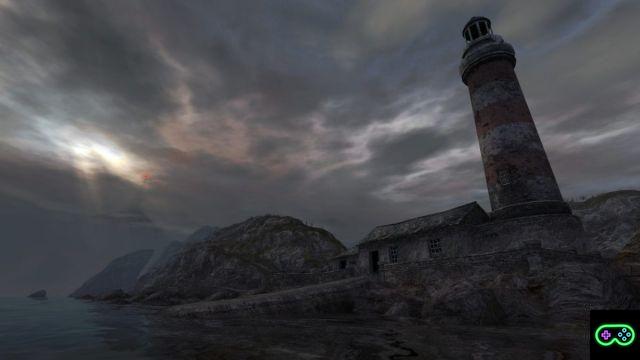
Who we are? Where are we? What are we doing in this place? And above all, what should we do?
I do not hide that i primi minute in Dear Esther can cause a bit of bewilderment, especially to those who are not used to video games where there are no enemies to shoot or puzzles to solve. To try to clarify our ideas a little, let's try to answer the questions just mentioned.
First of all, we don't know the identity of our protagonist; we only know that he is a middle-aged man who loves to write letters, almost all addressed to Esther, a woman to whom he is deeply attached and who, for reasons we do not know, is no longer there.
As regards the setting of our adventure, however, we have some more information: we are on one of the Hebridean islands, located off the west coast of Scotland. It is an archipelago that has been inhabited since the dawn of mankind and, among other things, made up of the oldest rocks in the United Kingdom.
If it is difficult, at least at the beginning, to understand the reason for our presence on this uninhabited place, what we are called to do is quite simple, as well as theonly option at our disposal: to walk. As we explore the island, in fact, we will be accompanied by the voice of the protagonist who, as soon as we reach certain places, we will will tell stories concerning the life of some characters: Donnelly, the first person to map the island, Jakobson, a shepherd who lived during the eighteenth century, and finally Paul, a man addicted to alcohol who, in some way, is linked to the disappearance of esther
It goes without saying that, especially in the beginning, all of this information will seem like pieces of too large a puzzle. The only thing that seems to attract the attention of the protagonist is a 'radio antenna, visible from the first minutes of the game, and that will become the goal of our journey, marked by the slow pace of our nameless hero.
Metaphors, presences and messages (more or less) hidden
As noted above, the gameplay of Dear Esther consists of going to a point A to point B, with a few exceptions. The bulk of the game experience, however, is exploring the island by trying to grasp the clues that will reveal themselves before our eyes, and that will give meaning to the narratives of the voiceover.
The idea of not being on a common and simple island will only take shape towards the middle of our journey; however, some signs of this will be clear from the outset.
In fact, in different points of the island it will be possible to come across gods messages written with a fluorescent paint, which will reproduce as much "rock paintings" as chemical formulas, up to reporting real and clearly legible writings.
Furthermore, immediately after leaving the pier, we will see some big ones white lines on the vertical cliff wall that, as the narrator specifies, constituted a method, since ancient times, to signal the presence of an epidemic to anyone who intended to land. It is clear, therefore, that the island has been plagued by some disease, but we seem to be the only human beings present for kilometers.
If chemical formulas (probably of drugs) and references to diseases were not enough, just look around to understand that, beyond the small initial pier, there are no places where it is possible to disembark and, consequently, not even to be able to leave. What has just been said is reinforced by the wrecks found in the bay, which perhaps represent attempts to land and / or escape that went wrong.
The confirmation of our suspicions comes in a completely random way when, exploring secondary places, we find a pile of abandoned books in the bottom of a gorge.
There are no more doubts: the island we are on is nothing more than a metaphor, the representation of a mental condition in which our protagonist has been blocked for who knows how long, from which someone will have tried to rescue him. in various ways (vessels and drugs are there to prove it), but to no avail.
Now everything is clearer: following a traumatic event, our protagonist is locked up on a desert island of his subconscious, not allowing anyone to enter nor to leave him.
But what could have pushed a man to such an extreme gesture? We can't say it yet, but the feeling is that "dear Esther" is directly connected to the whole affair we are living through.
What is above, and what is below
As above - so below,
as below - so above.
As inside - so outside,
as outside - so inside.
As in the large - so in the small.
The third universal law, as reported in the writings of Hermes Trismegistus, states that what happens inside us directly influences what happens outside us. Precisely on the basis of what has just been written, to understand the "outside", we must look inside, even if this means coming into direct contact with the pain.
Our journey began at the top, in a silence interrupted only by our footsteps, by some gust of wind and by the narrating voice, but the true understanding of what is happening will happen when we decide to explore what lies beneath, all inside, landing in one of the most evocative scenarios of the game: the caves.
If the surface was represented as a quiet landscape, motionless and touched by a soft light, filtered by a perennial mantle of clouds, the caves are the exact opposite: a constant play of light and shadow will accompany our descent, as well as bioluminescence. of the minerals and plants present, all accompanied by the constant flow of underground rivers. We will arrive in this area by taking a real leap of the void, thus reaching the deepest part of the island and discovering what is the event behind it all.
Il mystery is finally revealed: the Esther so dear to our protagonist died in a car accident, caused by that Paul to whom the voiceover has often referred and who, probably, was drunk at the time of the tragic event.
The protagonist, evidently, has never been able to overcome the trauma, refusing any elaboration of mourning and finding relief only in the most total isolation, represented as an inaccessible, immobile place, devoid of almost any form of sentient life and in which all escape routes have been destroyed or rendered useless.
All but one: the radio tower.
A slow ascent
Imagine yourself on an immense beach in the darkest hour of the night, and the only light sources are the pallor of a huge full moon and a distant bonfire.
Immediately after touching the pain of our protagonist, we will be called to reach the surface again, yet being aware of what we have to face. This time, however, we will be kissed by the white rays of the Moon, which will reveal a scenario as melancholy as it is breathtaking.
By now we are aware of the mystery that our man was trying to hide inside; it has fully emerged, and now it is our turn more difficult stages: processing and overcoming.
As soon as we take our first steps on the shoreline illuminated by the moonlight, we will notice the presence of numerous lighted candles. Observing them more closely, we will notice that we are not in the presence of simple candles, but of real ones the light of a votive, in whose vicinity there is an object that belonged to our beloved, or connected to her.
Some framed photos, pieces of his wrecked car and even a nest with eggs inside (perhaps to indicate that the woman was not the only victim of the accident), without considering the many paper boats drawn from the endless letters never arrived at their destination: all these elements are a testimony of the protagonist's bond with Esther, representing a tribute to the woman of his life and, at the same time, the main obstacle to achieving a new life, a new Start.
It is therefore no coincidence that, near the slope towards the radio tower, we will have to leave everything behind, reaching the only point that will allow us to send a message of help to the outside. Once we arrive at their destination, however, our protagonist will make an unexpected gesture: he will throw himself into the void. However, a few meters above the ground, his shadow (the only thing we can see of him) will change into that of a bird, hovering in the air and away from the island, thus concluding our journey.
Questions (many) and answers (few) ...
As you may have easily understood, Dear Esther is a very particular title, which does not immediately reveal its plot which, in fact, is the only ingredient at the base of the entire gaming experience. The narrative, however, immediately presents itself as cryptic and fragmented and, as often happens, leaves different unanswered questions.
Who exactly is the protagonist?
Is he Esther's husband?
Or is it really about Paul, the culprit of the accident?
Did he really visit the island present in his unconscious?
Was the woman the only victim?
And, above all, how does the story end?
Did the protagonist manage to send a signal outside, asking for help?
On the contrary, did you choose to continue living isolated from everything and everyone, fleeing the radio tower?
Or did he still choose to make an extreme gesture, realizing that suicide was the only real escape from the island?
It is almost useless to underline how these and other questions have been fertile ground for discussion threads on the forums and on the official pages of the game, and that even today, years later, a unique position has not been reached. The Chinese Room marches a lot on the questions that arise in the user's mind, but never provides a real answer or, at least, not in a "classic" way. The letters and the stories of the voiceover are almost a contour to our journey, while the bulk will be narrated (and revealed) using the emotions. How? Through the sounds, the plays of light and the colors that alternate in the various stages.
Il gloomy weather of the first section, for example, is a reflection of the condition of the protagonist, who for who knows how long has been in total isolation, without the slightest human contact. The very presence of abandoned houses, wrecks or even objects of everyday life is all that remains of the previous psychic integrity of man. Obviously the player will not be able to understand what is now written until after a certain moment, but everything that surrounds him is a clear reference to the previous life of the protagonist.
The moment of the "descent into the subsoil”Is undoubtedly the most intimate part of Dear Esther, with which the development team has chosen to bring back the most painful memories. It is no coincidence, in fact, that the scene of the accident is (re) experienced at the bottom of an underground lake, perhaps the deepest part of the island and, therefore, more hidden. The environment that we find in the caves is, as mentioned above, full of lights and colors, paradoxically much more cheerful than the surface. The devs chose these chromatisms just to symbolize the brain activity and its creative flashes, still present despite everything. The human mind is the greatest scientific mystery ever and, even in our case, it remains inscrutable, and the only messages we understand are the paintings and writings made with fluorescent paint which, in certain points of the descent, are much more present and probably have been chosen to represent the discomfort and psychosis of the protagonist.
The final part of our journey takes place, however, at night: everything is enveloped by the darkness which, with its black color, communicates the mourning that the protagonist lives, also reminded us by the many candles scattered along the coast. From the more relaxed tones of the soundtrack, a sort of acceptance is perceived, and it is no coincidence that, in the final climb, we are able to reach the highest point of the island, which allows us to see every corner, almost to represent the awareness of our man who, never as now, observes his condition in full lucidity.
… ten years later
What we have left, almost 10 years since the release of Dear Esther, is an intense and exciting story, able to amaze even the most skeptical and to pave the way for many other titles that will make the fortune of walking simulator.
If I were to turn to the past skeptical version of myself, I'd tell him yes: ne walking simulator the only purpose is to go from point A to point B, but that what makes the difference is what occurs in the amount of time that separates us from the final destination. We will not have hordes of enemies to defeat, puzzles to solve, platforms to jump on or objects to manufacture, but we will be constantly surrounded by a story that will accompany us at every single step.
And believe me: Sometimes, that's all it takes.





![[The Bear's Lair] God of War: Betrayal and Greek mythology](/images/posts/17432d3b12ecfec44b0b855d20c7520f-0.jpg)



